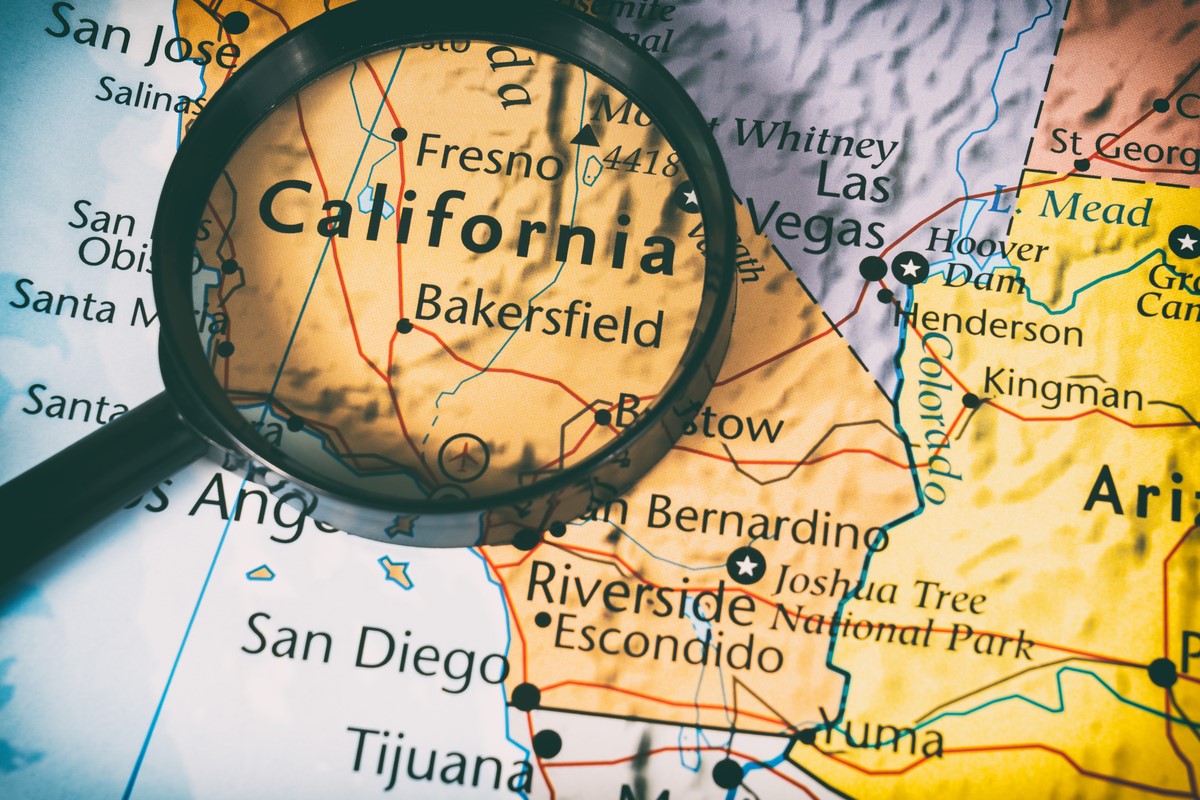
by Elliot Winer
The California Governor’s Office of Business and Economic Development (GO-Biz) introduced a new interactive database-mapping tool in October 2014. This new online portal designed for the EB-5 investor program will expedite the application process for certifying targeted employment areas (TEAs). This will not impact which areas can potentially be designated as TEAs, but will make it easier to construct TEAs and allow for quicker response times in issuing TEA letters. The California agency is to be commended for their continued willingness to listen to the EB-5 community and their innovative approaches in streamlining the application process and encouraging job growth through EB-5 investments.
Some aspects of the TEA designations will remain the same. For all special TEA designations requiring more than one census tract, applicants will still need to provide a supporting letter from the local economic development corporation (EDC) or county or city in which the project is to be located. The applicant will need to provide to the local agency a listing of each census tract with its corresponding unemployment rate and a map showing the project address. The support letter must indicate the local agency’s concurrence that the proposed census tracts will reasonably be a source of workforce for the project. Potential TEAs will still be limited to a maximum of 12 contiguous tracts.
Users of the new online database will still need to be aware of various limitations with the technology; there will be occasions where the TEA cannot be designated with the interactive data tool. The tool requires that an actual physical address be entered, but many projects, for example, cover a parcel of land that can only be described with boundaries, while other projects may have a new address that has not yet been established or is not recognizable. If users try to circumvent this by inputting an identifiable address within the project census tract, the TEA generated letter in turn would only certify that particular address, and not the actual location for the project.
Another limitation is an inherent problem with all address finders—different census tract numbers can show up for the same address, depending on which address finder is used. I have found all too frequently instances where an odd address will default to an even address in a different census tract, and vice versa. I would advise that both users and GO-Biz staff closely review all project addresses that fall near a census tract border, to verify that the address is correctly placed in the proper tract. If the data tool incorrectly identifies the tract location, the resulting TEA letter would be incorrect and could be challenged by USCIS.
In order to optimize the mapping data tool, it should not be simply used in a random or haphazard manner; otherwise, you may not be configuring the best possible TEA. The mapping tool will accept any contiguous connection, so if users search for any qualifying area with 12 or fewer tracts, the results may be an irregularly shaped area or a larger than necessary area. Such a result could make it more difficult to get a local support letter verifying that hiring is likely to come from throughout the proposed TEA census tracts. It is always best, when possible, to both minimize the number of tracts required, and make it as solid a geometric configuration as possible. A more regular shape will signal to USCIS that the TEA has been structured to reflect actual job creation, and has not been structured merely for the purpose of creating a TEA. While USCIS will supposedly defer to state determinations and only review the calculations and methodologies utilized, there is no guarantee that they will automatically approve any and all configurations coming through. For this reason, it is always advisable to keep the TEA as compact as possible in terms of both size and shape, to limit any possible concerns about excessive gerrymandering.
Watching out for maneuvering
My biggest concern with the mapping tool is the opportunity presented to those so inclined, to blatantly distort how a TEA should be defined. There is a definite need for built in safeguards for the overall good of the program and for the agency as well. Up until now, GO-Biz staff has reviewed TEA configurations to make sure they are reasonable, and would not likely approve an unreasonable looking TEA that extended long distances over bodies of water, mountain ranges, forests, etc. However, with the automated mapping tool, any 12 or fewer contiguous tracts with a qualifying rate would likely make it through the mapping tool. The problem with this is that most counties have enormous census tracts with no or negligible population. For example, tracts numbered in the 9900s are census tracts delineated specifically to cover large bodies of water and have no population, and tracts numbered in the 9800s are census tracts defined to cover large special land-use areas with little or no residential population. The coastal tracts that follow the Pacific Coast Highway generally have one tract that covers the coastal body of water for the entire county (Los Angeles County has three). For example, from the Mexico border to San Francisco there are 12 of these contiguous coastal tracts with zero population. Therefore, this makes it possible to take any low unemployment area near the coast (such as the real low unemployment areas in southern Orange County), move out a few tracts to one of the 9900 tracts, and go up or down the coast and come back in to whichever area has some high unemployment in close proximity. This can easily be done without exhausting your limit of 12 tracts.
Also disconcerting is the potential use of exceptionally large, but sparsely populated, tracts that could be used to configure areas hundreds of miles across. For example, one sparsely populated census tract in Riverside County, south of the San Bernardino County border, is approximately 60 miles across and 30 miles long, while another census tract further to the north in San Bernardino County encompasses an even larger area. These types of census tracts can be used to indiscriminately jump around and create huge distorted TEAs that maintain no economic or social connection.
GO-Biz would probably counter, and rightfully so, that their safeguard should be the support letter where the local government has to concur that the proposed census tracts will reasonably be a source of workforce for the project. Unfortunately, this will not always work in practice, except perhaps for the most absurd configurations. Local governments are anxious to encourage economic development so some would have no issue with providing a letter, knowing that employment could certainly be drawn from the nearest areas in the TEA configuration. On the other hand, while most agencies would not support a totally unreasonable area, the process allows a support letter from any local economic agency, so if a county or EDC will not provide a letter, one could always try the city or a different planning or economic development agency or person within the region, county, city, etc.
The potential fallout from all this would be a black eye for both the EB-5 program and the state of California. We all know how various media folk don’t miss an opportunity to attack EB-5. Think about the field day they would have if they come across a TEA (and if there is one, they inevitably will) where they can show, for example, that a developer used the Pacific Ocean as a link to combine an area like Newport Beach—with low unemployment—with high unemployment areas in Los Angeles or San Diego for the sole purpose of getting a TEA designation. I shudder to think how the spin would go and the negative impact it would have on the integrity of the EB-5 program.
Demanding diligence
GO-Biz needs to still be diligent and pro-active in screening out frivolous TEA requests through their new system, as it is to everyone’s benefit in the EB-5 community to prevent blatant attempts to circumvent the spirit of the law. They should adjust their mapping tool so as not to allow the use of 9900 water tracts for combining TEAs, except for those where there is a bridge connection. Even some of those states that have no limitations to the number of tracts that can be used for a TEA will still not allow the use of these water-only census tracts with zero labor force that span many miles of coastline, and will also not allow the use of certain connector tracts for TEA purposes because they tend to create very distorted areas with no relationship to the actual place of business.
Use of other questionable census tracts needs to be reviewed on an as-needed basis and GO-Biz, at a minimum, should clearly state on their website that all TEAs must show a reasonable geographical configuration and that GO-Biz may choose not to approve a qualifying area if they feel it does not meet the proper criteria. For example, the previously referenced sparsely populated Riverside County census tract has a legitimate qualifying rate and it would also be appropriate to combine this tract with adjoining tracts, but it should not to be used solely for purposes of connecting a faraway low unemployment area with distant areas of high unemployment. It is not sufficient to leave the screening process up to local government officials and assume they will deny any inappropriate support letter request, when not everyone is fully cognizant of the program or the process. GO-Biz needs to make it clear to all users that they will still thoroughly review all TEA requests and make the final determination as to suitability.
DISCLAIMER: The views expressed in this article are solely the views of the author and do not necessarily represent the views of the publisher, its employees. or its affiliates. The information found on this website is intended to be general information; it is not legal or financial advice. Specific legal or financial advice can only be given by a licensed professional with full knowledge of all the facts and circumstances of your particular situation. You should seek consultation with legal, immigration, and financial experts prior to participating in the EB-5 program Posting a question on this website does not create an attorney-client relationship. All questions you post will be available to the public; do not include confidential information in your question.







